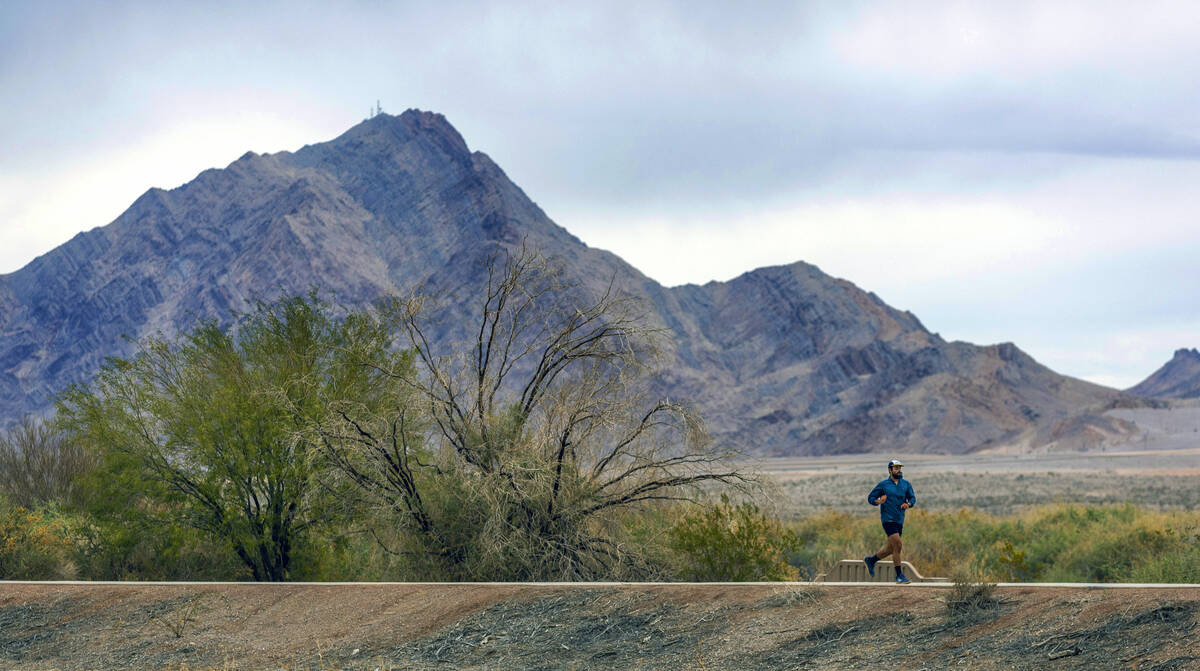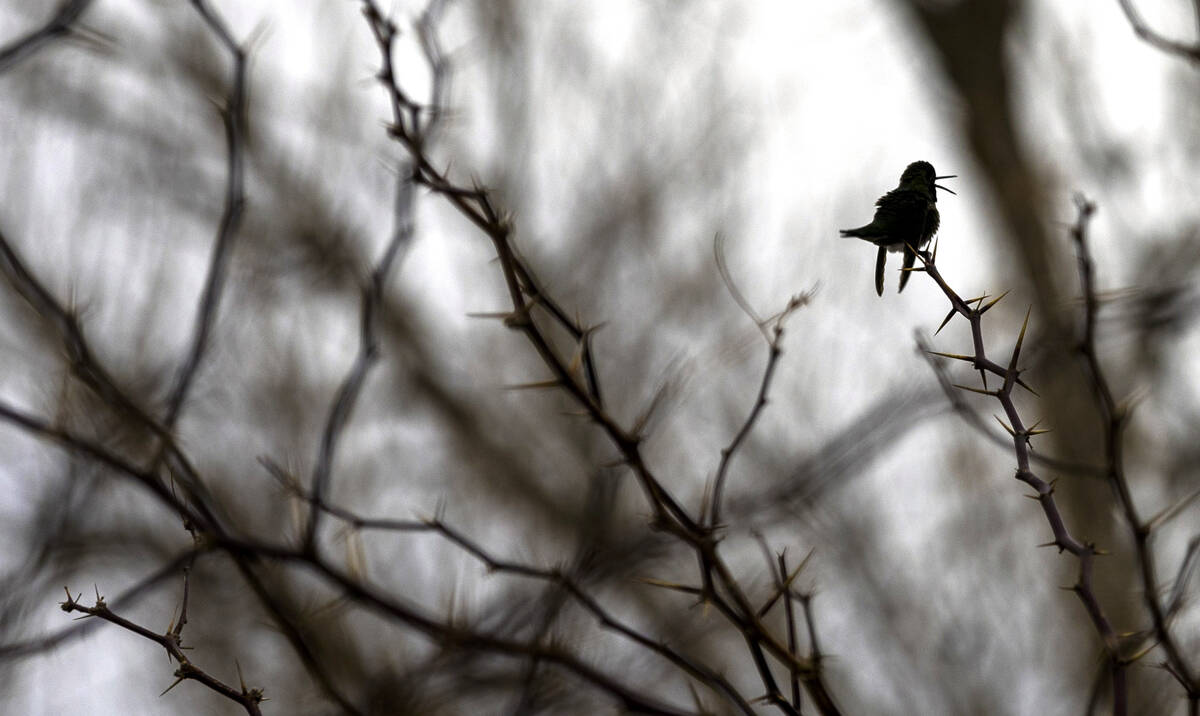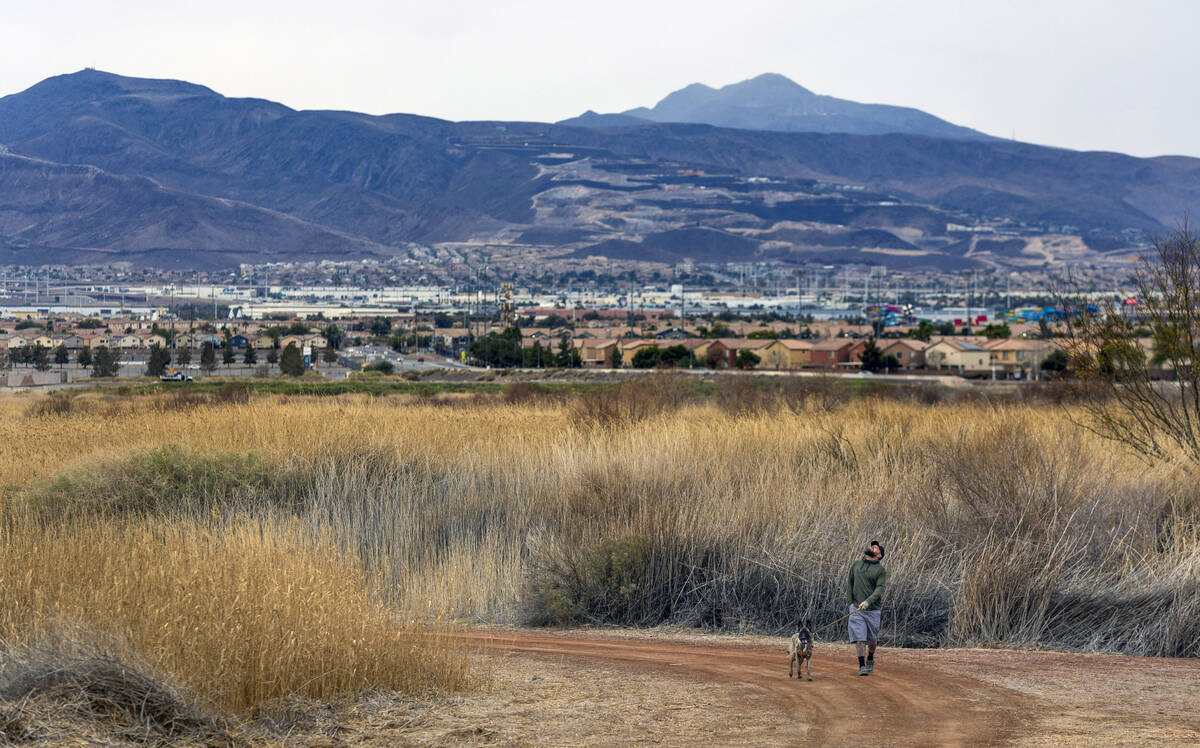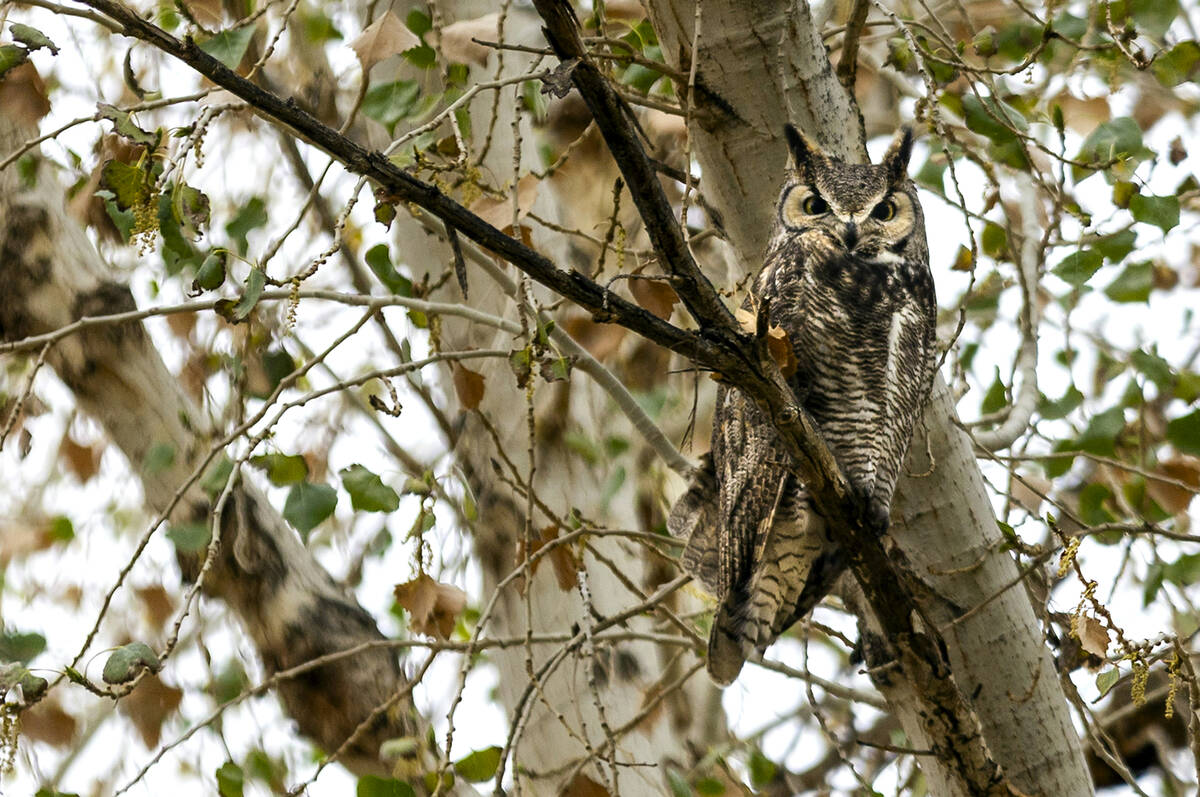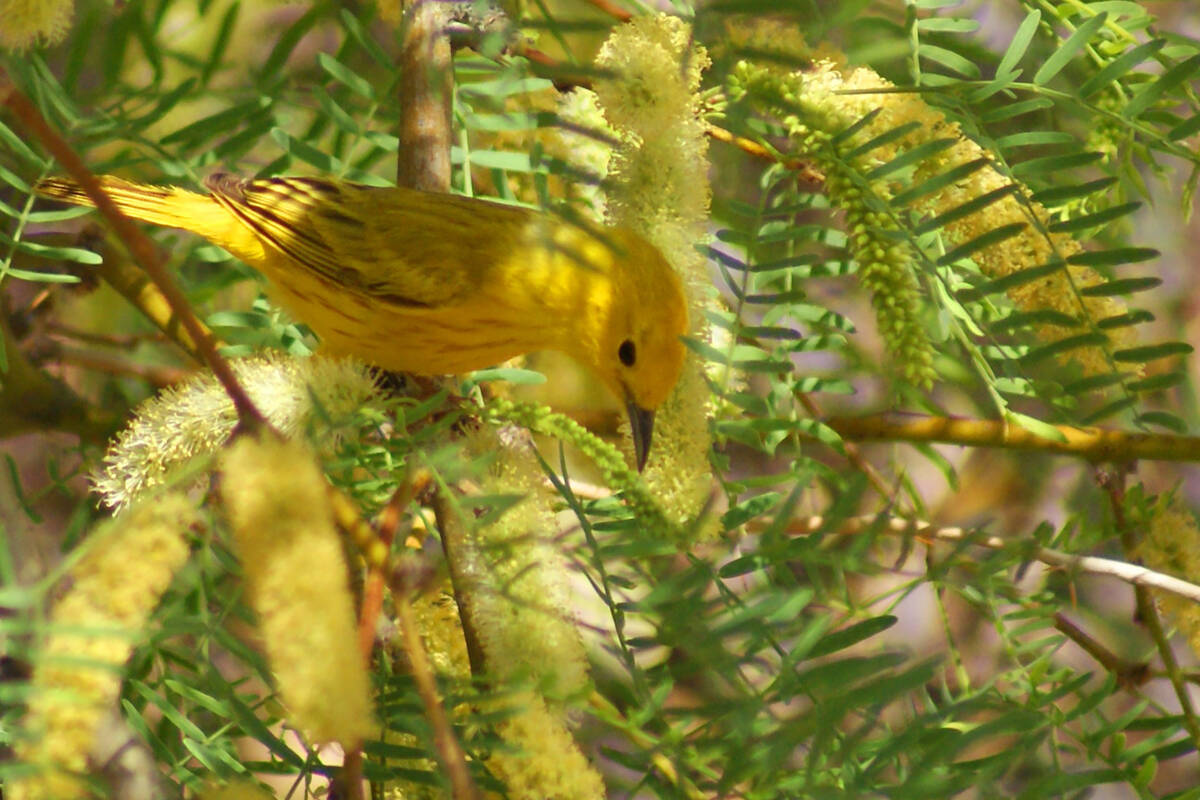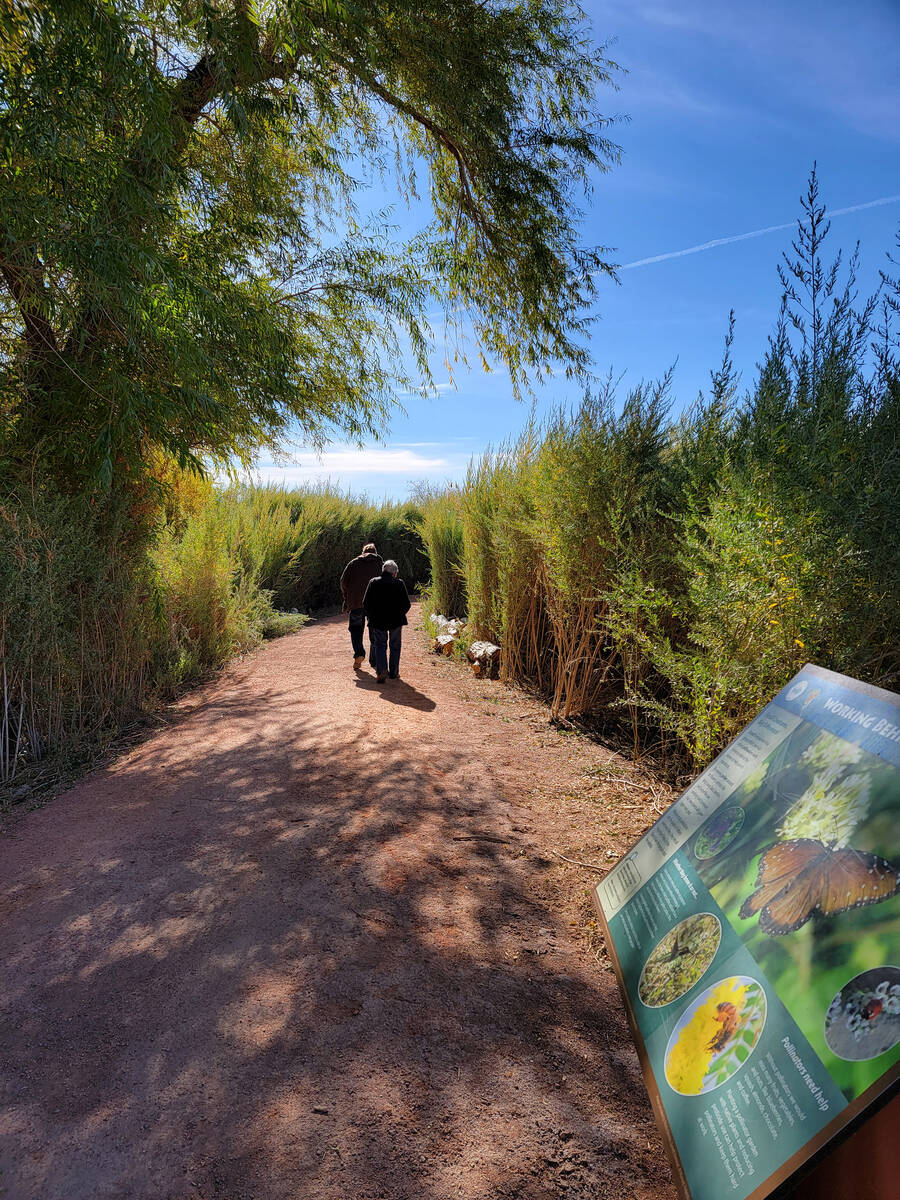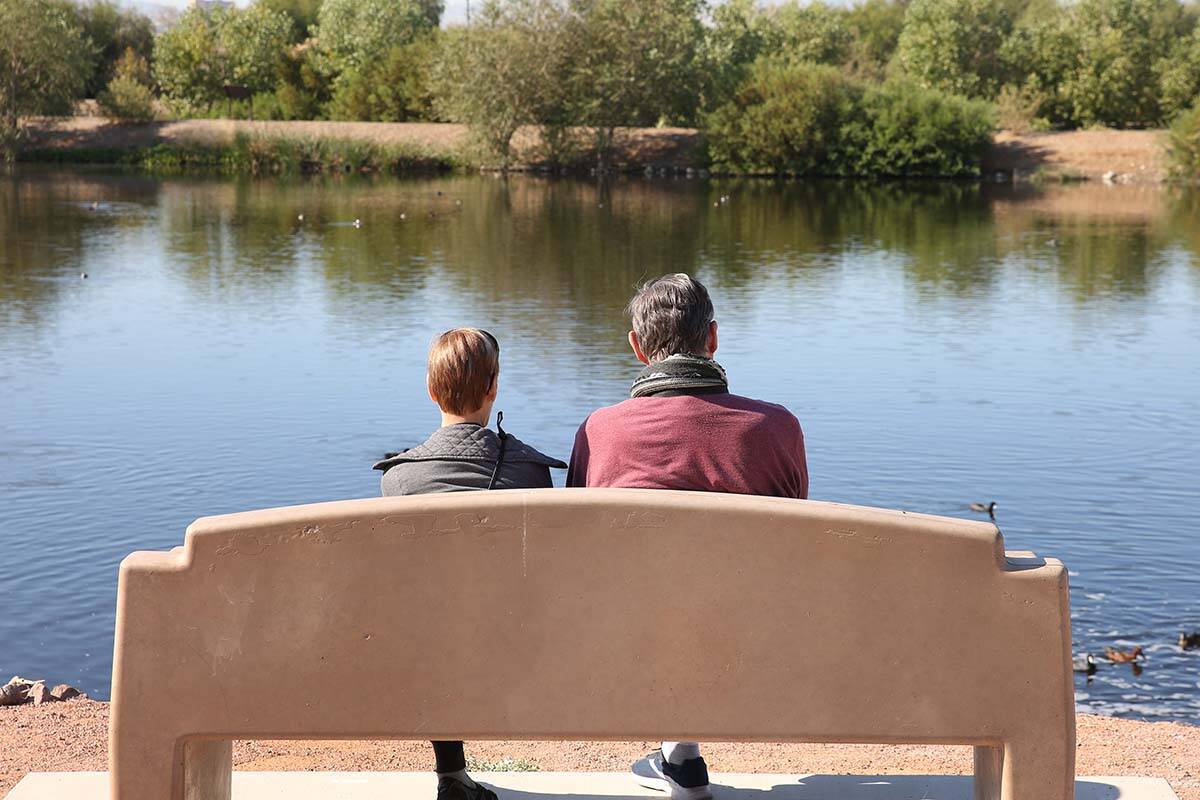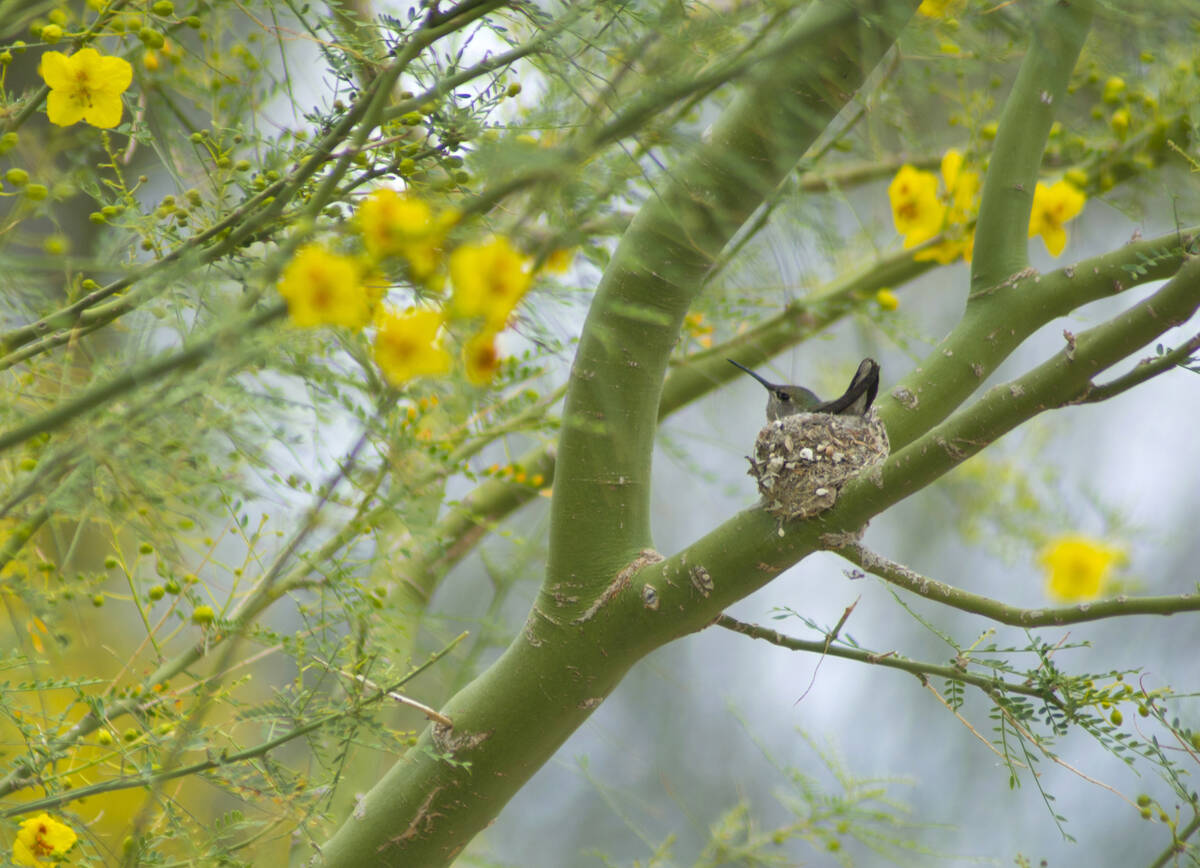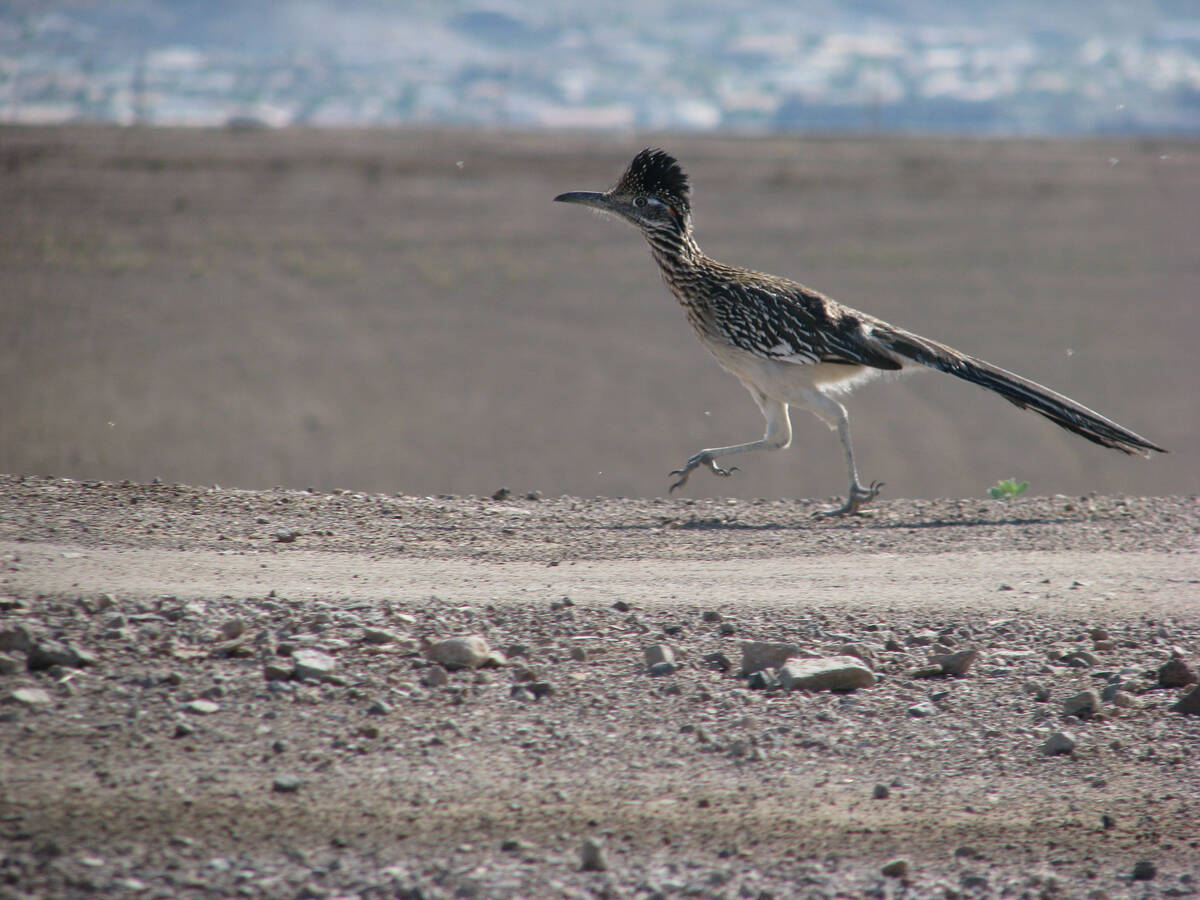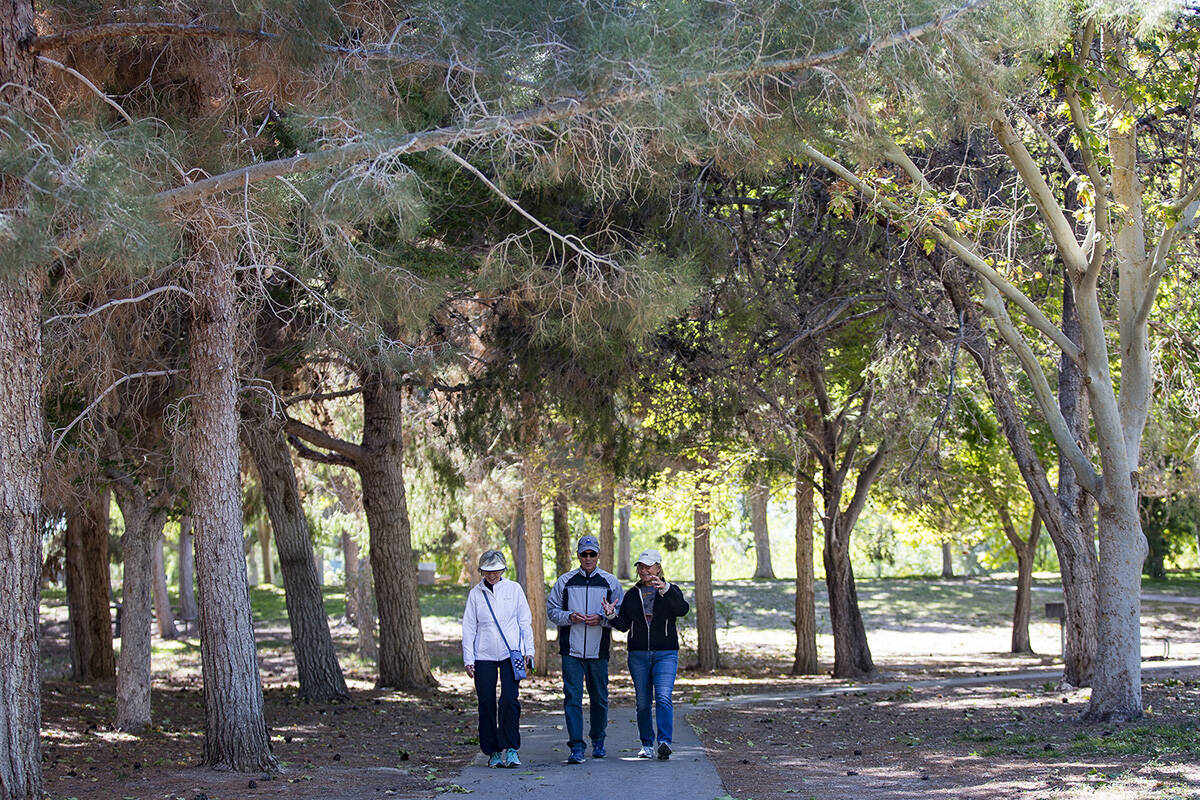How time on a trail or in a park bolsters our well-being
As the days get shorter and our lives get busier with end-of-year festivities, finding moments for yourself becomes more important — and what better way to take care of yourself than by connecting to the great outdoors?
But if you feel like it’s difficult to connect to nature in the city, let alone a city in the desert, you’re not alone. Here are some ways that spending time in nature, even in an urban setting, can help you de-stress and decompress, and perhaps leave you with new ideas about how to interact with your local park.
Attention restoration
Have you ever been completely absorbed while observing a sweeping sunset, a flock of birds or a blooming flower? Then you may have experienced a state known as “soft fascination,” a term coined in a foundational study on the therapeutic benefits of being in nature in 1995 by Stephen Kaplan.
This feeling refers to the sweet spot of how we pay attention in nature — it can completely absorb our senses without much work on our end to focus. Moments like these matter because they give us a chance to be present and can alleviate feelings of stress brought on by work, family and the general strain of being a modern human.
Soft fascination is just one component of what is known as “attention restoration theory.” Kaplan used this study to show how time in nature can help people concentrate better by alleviating symptoms of mental fatigue and stress, in large part because nature provides a refuge and a place to engage in “soft fascination” with the world.
In other words, being in nature gives us a chance to follow our curiosity and make observations guided by our sensory experiences — we may begin by watching clouds in the sky, then turn our attention to a tree, or a finch in the tree. Tiny moments like this add up and replenish us.
Two hours a week
But how much time in nature is enough? The answer may vary from person to person, but one 2019 study from the University of Exeter recommended people spend two hours a week as the “minimum dosage” of time in nature to start seeing benefits, like less stress and improved concentration. That time could be divided into about 18 minutes a day, just enough for a morning or evening stroll, or a longer period spent on a trail once a week. Either way, this report was done among people visiting urban green spaces and suggests that you do not have to go far from home to connect to nature.
Green space and brown space
If you’re wondering if Las Vegas has enough nature to begin with, the answer is yes. But we have unique challenges as a city in the desert. Almost all of the foundational studies about the therapeutic benefits of nature looked at forests and other green spaces, with less attention on desert environments.
Here, our green spaces are at local wetlands, which also happen to be some of the most biodiverse areas in the city. Places such as Clark County Wetlands Park, the Henderson Bird Viewing Preserve, and the historic spring at the Springs Preserve are home to cottonwoods, willows and other riparian plants that offer shelter and food for numerous insects, birds and other wildlife. These pockets of green spaces are places for solitude and community alike and help us connect with other organisms because of the presence of water.
But our wetlands are not the only place to connect to nature in the Las Vegas metro area. The study of our mental well-being in other habitats, like deserts, is not as well documented, but many people find experiences of awe and tranquility in the desert, perhaps from the wide-open spaces, the clear blue sky or the patterns of our rich geology.
In 2022, researchers from the University of Arizona found that several common desert plants, such as creosote, honey mesquite and desert willow, produce certain chemical compounds that are known to have anti-stress and other qualities. These compounds are the same ones that have been studied extensively in foundational studies on forest therapy in Japan, where researchers examined how we respond physiologically to plants.
In the case of our desert plants, they emit these compounds in more quantities after rainstorms to retain moisture and deter predators. If you’ve been in the desert after it rains and felt your mood lift, this may be one of the reasons why.
Although we haven’t fully measured the extent of phytoncides’ effects on our bodies, remembering that we are interacting with the landscape on a physiological level can help promote feelings of interconnection in urban parks and trails. These native plants are found throughout the city, especially in spaces that are converting to more drought-tolerant desert landscaping.
Birdsong boosts
If you’re noticing the plants around where you live, odds are there are birds out and about. Connecting with birds is an excellent way to connect to nature because birds are in every environment — from backyards and shopping centers to urban parks and nearby hiking trails.
But when was the last time you actively listened to birdsong? This winter, perhaps you will hear the sweet serenades of white-crowned sparrows, a migrating species that sings throughout the cold months. Or maybe you will hear some of our vocal resident birds like great-tailed grackles or house finches.
Birdsong has a strong correlation with improved mental health. One study conducted in 2020 found that the natural sounds of birdsongs boost our mood, after hikers reported higher states of well-being on trails with birdsong versus trails without.
The good news for us is that our urban parks are some of the birdiest places in the city because of the abundance of plants and, in some cases, water.
Listening to birds can act as an auditory refuge in a city where there are so many man-made noises — and apps like Merlin, from the Cornell Lab of Ornithology, can even help you identify which species you’re hearing. With at least 25 “everyday” urban birds that can be found throughout the city, you’re sure to hear a variety as you settle in and listen to the soundscape around you.
Protecting natural habitats
As Las Vegas expands and our population grows, it will become more and more important to advocate and protect our local parks and natural habitats — not only for the sake of biodiversity, but also for our own well-being. Desert parks and wetlands are a lifeboat of biodiversity in the city, and more natural spaces means more environmental resilience in the long term.
Some local parks that are great for connecting to native plants and birds include Clark County Wetlands Park, the Henderson Bird Viewing Preserve, Sunset Park, Floyd Lamb Park and the Springs Preserve walking trails. Consider visiting your local park not just to recreate, but to learn more about the landscape you share with a myriad of other organisms.
You’ll be surprised at how much life lives alongside you, and what you notice when you arrive in nature with no agenda besides observing and being present.
If you’re looking for community, you can also join nature walks from local agencies and nonprofits such as the Red Rock Audubon Society, the Nevada Department of Wildlife, Southern Nevada Conservancy and others.



